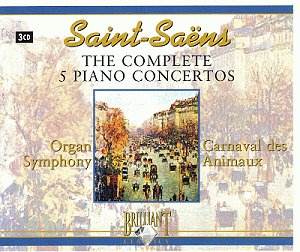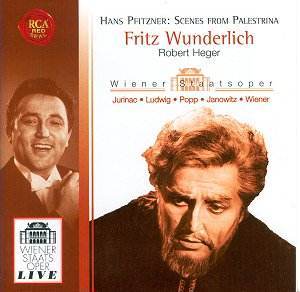 Composer: Camille Saint-Saëns
Composer: Camille Saint-Saëns
Works: The Complete 5 Piano Concertos, Symphony No. 3 in C minor Op. 78 “Organ”, Carnival of the Animals
Performers: Gabriel Tacchino (piano), Orchestra of Radio Luxembourg, Louis de Froment (conductor), Baltimore Symphony Orchestra, Sergiu Comissiona (conductor), Slovak Philharmonic Orchestra, Bystrich Rezucha (conductor)
Recording: 3 Discs: 77:00, 67:53, 64:21
Label: Brilliant Classics
Saint-Saëns, often relegated to the periphery of the Romantic canon, emerges as a composer of considerable depth and complexity in his piano concertos. His prolific output, marked by an extraordinary blend of technical brilliance and melodic invention, has often been overshadowed by his contemporaries. The present collection from Brilliant Classics seeks to encapsulate his five piano concertos alongside the “Organ” Symphony and “Carnival of the Animals.” While the label’s intention to offer a comprehensive survey is commendable, the execution falters, particularly in the context of a marketplace rich with superior alternatives.
Gabriel Tacchino’s performance is undeniably the highlight of this set. His technical prowess shines brightly through the demanding passages of each concerto. In the opening of Concerto No. 2, for instance, Tacchino’s articulation of the rapid scalar runs is executed with clarity and precision. Yet, the orchestral accompaniment, conducted by Louis de Froment, falls short of the standards set by Tacchino’s commanding piano work. The intonation issues in the lower strings during the poignant slow movement of Concerto No. 1 are particularly egregious, undermining the emotional gravity of Saint-Saëns’s writing. The lack of cohesion between soloist and orchestra is palpable, with moments of poor synchronization marring what could have been a memorable interpretation.
The recording quality further detracts from the overall experience. The harshness in the upper register of the piano creates a brittle sound that fails to capture the lushness inherent in Saint-Saëns’s orchestration. The engineering feels dated, reminiscent of the 1960s, which is corroborated by the sparse documentation provided. The absence of recording venue details and the lack of production notes suggest a hurried release rather than one that has been thoughtfully prepared for the discerning listener.
When compared to other recordings, such as Stephen Hough’s interpretation for Hyperion, the limitations of this set become starkly apparent. Hough’s nuanced approach to phrasing and his ability to evoke the lyrical qualities of the music stand in stark contrast to Tacchino’s otherwise impressive but occasionally mechanical execution. Furthermore, the renditions of “Carnival of the Animals” suffer from an unsettling disparity in balance, where the uncredited pianists appear to be performing from differing acoustical environments, detracting from the playful interplay characteristic of this piece.
The “Organ” Symphony, often a highlight in Saint-Saëns’s oeuvre, is rendered here in a lackluster performance by Sergiu Comissiona and the Baltimore Symphony Orchestra. The interpretation lacks the dramatic sweep and grandeur one expects, and again, the recording quality does little to enhance the sonic richness of the organ’s majestic tones.
Despite its noble intentions, this release struggles to make a compelling case for itself amidst a landscape of more polished and insightful interpretations. The exuberance and charm of Saint-Saëns’s music are present, but they are often obscured by lackluster orchestral support and subpar engineering. Collectors and enthusiasts seeking a definitive exploration of Saint-Saëns’s piano concertos would do well to look elsewhere, as the current offering ultimately fails to rise above the considerable competition.



